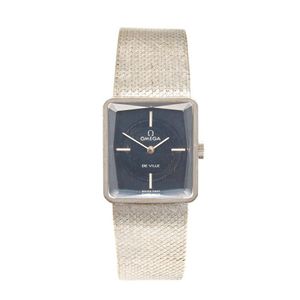Audemars Piguet Perpetual Calendar Wristwatch
You must be a subscriber, and be logged in to view price and dealer details.
Subscribe Now to view actual auction price for this item
When you subscribe, you have the option of setting the currency in which to display prices to $Au, $US, $NZ or Stg.
- Art Deco Period - The Art Deco period was a cultural movement that emerged in the 1920s and 1930s, and was characterized by its emphasis on modernism, luxury, and elegance. The name "Art Deco" comes from the Exposition Internationale des Arts Décoratifs et Industriels Modernes, a large exhibition held in Paris in 1925 that showcased the latest trends in decorative arts.
Art Deco was a reaction against the ornate and elaborate styles of the previous era, and reflected a new modern sensibility. It was characterized by streamlined, geometric shapes, bright colours, and the use of new materials such as chrome, glass, and Bakelite. Art Deco designers sought to create a sense of luxury and sophistication, often incorporating expensive materials such as ivory, marble, and rare woods.
Art Deco had a significant impact on a wide range of artistic fields, including architecture, fashion, graphic design, and interior design. Some of the most iconic examples of Art Deco architecture include the Empire State Building in New York City, the Hoover Building in London, and the Palais de Chaillot in Paris.
The Art Deco period came to an end in the 1940s, as World War II and changing cultural trends led to a shift in artistic styles. However, Art Deco remains an important influence on design and art, and continues to be celebrated for its modernist sensibility and glamorous aesthetic. - Movement - The technical name for the workings of a clock or watch, and does not include the dial or case.
- Date Aperture - A date aperture is a cut out section in the face of a watch or clock, displaying the day of the month.
- Circa - A Latin term meaning 'about', often used in the antique trade to give an approximate date for the piece, usually considered to be five years on either side of the circa year. Thus, circa 1900 means the piece was made about 1900, probably between 1895 and 1905. The expression is sometimes abbreviated to c.1900.
This item has been included into following indexes:
Visually similar items

Jaeger-LeCoultre an 18ct white gold and diamond-set reversible wristwatch ref 256.3.75 no 203574 Reverso Duetto, manual winding movement, fully jewelled, silvered dial with engine turning to the centre, black Arabic numerals, blued steel sword hands, subsi

Cartier An 18ct white gold rectangular chronograph wristwatch with registers ref 3212 case 238043CD Tank Americaine circa 2002, quartz movement, silvered dial with black Roman numerals, secret signature at 10, black inner 1/5th second divisions with five m

Emporio Armani, a stainless steel chronograph wristwatch with registers no Ar 5321, quartz movement, black dial, applied baton numerals, outer minute dial Dauphine hands, subsidiary dials at 3, 6 and 9 for constant seconds, 30 minute and date, polished squ

A gentleman's gold De Ville wristwatch, Omega, circa 1970's. Manual wind. 24.7 x 22.3 mm. Case numbered D12714 8196. Movement numbered 3605. Rectangular blue dial with applied luminous batons. Mesh style bracelet, numbered 711 1678. Dial and buckle signed.
